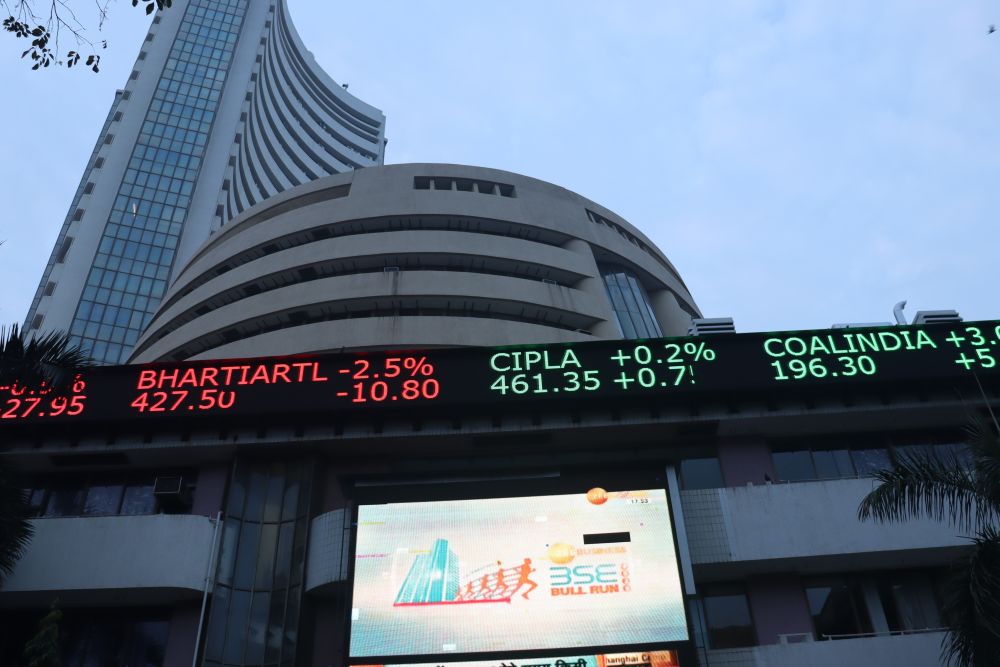WITH the direction of interest rates not changing dramatically anytime soon, the Asian G3 bond market is likely to remain as accommodating for issuers and borrowers as it was in 2019. In fact, the market has been witnessing a heavy deal flow in January amid the positive investor sentiments at the start of the year on the back of the US-China phase one trade deal announcement in December. In addition, the Chinese Lunar New Year is early this year, so many of the issuers and borrowers are front-loading their issuances before the holidays.
“We certainly have a good pipeline of deals for the first quarter of 2020,” says one senior banker, as he expects a continuation of the robust issuance activity into the new year. “We’ve seen three rate cuts last year, which changed the direction of risks and have created a more stable US dollar and fueled more capital inflows into emerging markets. A lot of issuers have learned their lessons in 2018, which was a tough year that forced many of them to stay on the sidelines.”
The brisk issuance activity at the start of 2020 followed a record-breaking year in the Asia G3 bond market in 2019 when the volume amounted to US$349.47 billion, according to Refinitiv, which exceeded the previous high of US$333.27 billion in 2017. The amount also represented an increase of 28.2% from US$272.69 billion in 2018.
China remains one of the biggest themes in the Asia G3 bond market and Chinese-related transactions figured prominently in The Asset Triple A Sustainable Capital Markets Regional Awards 2019.
China accounted for more than half of the issuance volume in 2019 with US$183.02 billion for a 52.4% market share. This was up from the 45.9% market share it recorded in 2018 when its issuance volume amounted to US$125.28 billion. The plethora of Chinese deals is once again being led by the property developers with the likes of China Fortune Land Development, Kaisa Group Holdings, Sunac China Holdings, Yuzhou Properties and Logan Property already initiating their fund raising in January.
Chinese e-commerce giant JD.com also returned to the US dollar bond market after nearly four years, pricing on January 7 a two-tranche offering totalling US$1 billion, including a 30-year bond amounting to US$300 million.
India made a huge stride in the Asia G3 bond market in 2019 when its issuance volume surged to US$21.53 billion – from only US$6.50 billion in 2018 – as the higher-rated Indian issuers and borrowers, as well as the stronger credits, turned to offshore markets to raise capital amid the challenging domestic credit environment. There are expectations that this trend will continue with the Export-Import Bank of India (US$1 billion), Manappuram Finance (US$300 million) and Shriram Transport Finance Company (US$500 million) already accessing the market in January.
The Shriram bond is significant as it represented the first international public social bond issuance out of India and it generated a strong demand particularly from US investors. The proceeds from the bonds would be used for employment generation, including through micro, small and medium enterprise (MSME) financing and micro finance. Indiabulls Housing Finance actually sold the first social bond out of India in January 2018, when it printed a 10-billion-rupee (US$140.92 million) Masala bond, with the proceeds deployed for a low-cost or affordable housing programme.
But issuances out of Indonesia and Singapore failed to match the brisk trend in 2019. With the presidential election in April casting a shadow on market activity, the deal volume out of Indonesia dropped to US$16.17 billion from US$21.27 billion in 2018. The Republic of Indonesia, though, came out early this year with a big deal, pricing on January 8 a dual-tranche US$2 billion offering and a one-billion-euro (US$1.11 billion) issue, achieving in the process the lowest spread and yield in both markets.
Singapore also saw a reduced volume to US$9.87 billion from US$13.19 billion during the same period on the back of a pick-up in activity in the Singapore dollar bond market. “A lot of the transactions in the Singapore dollar bond market have been in capital format and the market does not just offer the issuers the size and diversification, but value proposition as well in terms of pricing if they swapped the proceeds back into their home currency,” notes another banker.
Undoubtedly, the big story for the Asia G3 bond market in 2019 was the resurgence in high yield bond issuance, which rose 83.2% to US$82.32 billion from US$44.94 billion the previous year, according to Refinitiv. It was the largest high yield bond volume in the past 10 years, eclipsing the previous high of US$58.71 billion in 2017. “The rate cuts created the backdrop in the improvement of credit risk appetite, which led to more primary issuances,” the first banker says. “It was a year that the maturity of the market was really evident.”
China was even more dominant when it comes to high yield bonds, as it accounted for a 63.6% market share or US$52.38 billion of the issuances in 2019, led by the property developers. This was up from its 51.1% market share, or US$22.96 billion in 2018.
Amid the declining interest rate environment, risky assets were much more in focus and that was evident last year, the banker notes. Perpetual securities were on the investors’ radar in 2019 amid the resurgence in private banking bids and will continue to be so this year. The fixed-for-life deals from Ayala Corporation and AC Energy, which both raised US$400 million each in October and November 2019, respectively, were sort of a high-water mark for appetite for perpetual transactions – there was no step-up and no reset structure – with both deals generating strong investor demand.
In terms of equity capital markets’ (ECM) activity, Refinitiv says total issuance volume amounted to over US$216.33 billion in 2019, compared with US$199.74 billion the previous year. This was underpinned by the higher volume in follow-on offering to US$95.91 billion (up 2.1%) and in convertible bonds to US$54.29 billion (up 81.3%), which offset the decline in initial public offerings (IPOs) to US$66.14 billion (down 12.9%).
“It was a tough year for IPOs in 2019 and a number of the Chinese deals have to be restructured,” notes an ECM banker. “Korea was disappointing considering that it is a mature market. There was a whole host of reasons for that, including the chaebol restructuring. However, we may see a rebound in activity in Korea this year.”
One deal that attracted a lot of attention was the US$12.9 billion Hong Kong secondary listing for Alibaba Group, which was done amid the protests in the territory. It was the largest offering globally at the time of listing in 2019 and the largest Hong Kong-listed equity deal since 2010. It was likewise the largest ever technology follow-on offering globally and the first Chapter 19C secondary listing on the Hong Kong Exchange.
Large Chinese companies listed in the US, which have become repeat issuers, were among the major drivers of CB issuances in 2019. “The US investor base is clearly there for them, and the pricing terms and structures that investors were going to accept were certainly favourable to issuers,” another banker points out. “We’ve also seen these companies accessing the market for opportunistic financing. In terms of structure, we will see CB transactions done in equity plus convertible format, using the equity tranche as a means to create a stock borrow.”
Another theme that further resonated in 2019 was green and sustainable financing – both loans and bonds – which were again highlighted in The Triple A Regional Awards 2019. A banker says: “Green and sustainable financing continue to grow in a major way. An increasing number of issuers are getting more motivated, while investors are setting up green-dedicated funds to invest in these asset classes.” Adds another banker: “Many green and sustainable financing transactions were already mandated for 2020 execution.”
The Republic of Korea showed the way in capturing this theme with its US$1.5 billion dual-tranche green and sustainability notes – the first ever by a sovereign globally and the first socially responsible investment (SRI) framework by a sovereign issuer where the use of proceeds is managed by a sovereign wealth fund, Korea Investment Corporation.
The World Bank issued two tranches of catastrophe-linked bonds in November in order to provide the Republic of the Philippines with financial protection of up US$75 million for losses from earthquakes and US$150 million against losses from tropical cyclones for three years.
Other Korean issuers have joined the green and sustainable financing bandwagon with Shinhan Financial Group pricing a US$500 million tier 2 subordinated sustainability note. This represented the first offshore Basel III tier 2 subordinated note offering by a financial holding company in Korea and priced with zero new issue concession amid a large orderbook of US$4.3 billion. One of the country’s policy banks, Korea Development Bank, raised 500 million euros in zero coupon green bond – its first in this market which generated a strong demand from the central banks and official institutions.
Another sustainable financing-related deal that stood out in 2019 among the financial institutions was the US$680 million Sustainable Development Goal (SDG) Formosa bond by Malaysian lender CIMB Bank. This was the first ever SDG bond issued by a Malaysian and an Asean issuer in the Reg S market and also the first to be issued in the Formosa market. It achieved an attractive pricing and an arbitrage opportunity for a five-year benchmark since it was printed 15bp tighter than what it would have been priced in the conventional Reg S US dollar public market.
Elsewhere in the region, BTS Group Holdings of Thailand closed a 13-billion-baht (US$430.89 million) multi-tranche senior and unsecured green bond, representing the first Thai green bond offering to institutional and high net worth investors, as well as the largest and longest tenor green bond offered in Thailand.
Adani Green Energy, through its three wholly-owned subsidiaries, concluded the first ever investment grade US dollar bond by an Indian renewable company amounting to US$362.5 million. It was also the first amortizing bond structure out of India, with the tenor in line with the concession period.
One of the most prolific issuers in the region, Bank of China, also introduced a novel transaction – a US$962 million equivalent multi-currency green bond, which marked the first international capital markets’ transaction by an Asian issuer to follow the secured overnight financing rate (Sofr) benchmark established by the Federal Reserve of New York aimed at replacing Libor by the end of 2021.
A private equity firm headquartered in Singapore, Quadria Capital, arranged the world’s first sustainability improvement capital call facility, amounting to US$65 million. The innovative facility pegs the interest rate to a set of ESG performance targets on the Quadria portfolio. Quadria’s interest rate will go down if the annual assessment proves that it is meeting its sustainability targets. This incentivizes the way Quadria picks its portfolio companies and influences ESG improvement in its portfolio.
Ground-breaking transactions were also honoured in The Triple A Regional Awards 2019, including a worldwide trade receivables’ securitization programme for Lenovo Group and a consumer loan-backed securitization for Prime Credit of Hong Kong.
The Lenovo transaction encompassed 45 selling entities in 21 jurisdictions and fortnightly funding in 14 different currencies with full capital structure – senior, mezzanine and equity – being distributed to banks and private equity funds enabling a lower cost of funding. On the other hand, the consumer loan transaction for Prime Credit was the first public term securitization in Hong Kong since the early 2000s and the first ever public consumer loan securitization in the territory. Completed against a market backdrop of civil unrest in Hong Kong, the deal was likewise the first AAA-rated consumer loan securitization in Asia, outside of Japan.
In terms of issuers, China Ministry of Finance (MoF) was selected as the sovereign issuer of the year on the back of its two significant transactions in November in which it raised over US$10 billion. It accessed the euro bond market after an absence of 15 years with a blowout deal, pricing on November 5 a multi-tranche offering totalling four billion euros. Then on November 26, it returned to the US dollar bond market with its biggest ever sovereign issuance amounting to US$6 billion in four tranches.
The MoF also successfully priced a CNH1.7 billion fixed rate note in early July 2019 to commemorate the 20th anniversary of the handover of Macau. It was its first offshore bond listed on MOX, the newly-established stock exchange in Macau.
Among corporates, Reliance Industries was again cited as the best issuer out of South Asia. The largest private sector company in India raised an equivalent of US$5.60 billion in long-term debt in 2019, comprising US$4.60 billion in foreign currency and US$1 billion in rupee debt. It also tapped a new pool of liquidity with its debut Schuldschein issuance amounting to 405 million euros – the first Asian corporate to access this traditionally German-centric debt market.
Hong Kong conglomerate CK Hutchison again distinguished itself in the capital markets in Asia with well-executed debt deals, including the 10.4-billion-euro underwritten bridge facilities and subsequent syndicated loan and bond take-out financing following the formation of a new wholly-owned telecom holding company, which consolidates the group’s operations in Europe, Hong Kong and Macau. It also raised US$1.5 billion in senior unsecured notes with the book building process resulting in an orderbook of over US$3.5 billion, which enabled pricing at the tight end of guidance across tranches.
Singapore lender United Overseas Bank was chosen as the best issuer among the financial institutions with its series of fund raising across different products and asset classes in 2019 that included a S$750 million additional tier 1 security, a US$500 million covered bond, a two-billion-yuan (US$289.85 million) Panda bond, and a US$600 million tier 2 bond. In addition, its Sydney branch raised A$500 million (US$344.83 million) in July through a three-year floating rate note.
For the complete list of Best deals, please click here
For the complete list of Best issuers, please click here
For the complete list of Best bank and Best advisers winners/nominees, please click here
To join the dinner celebration, please contact [email protected].








